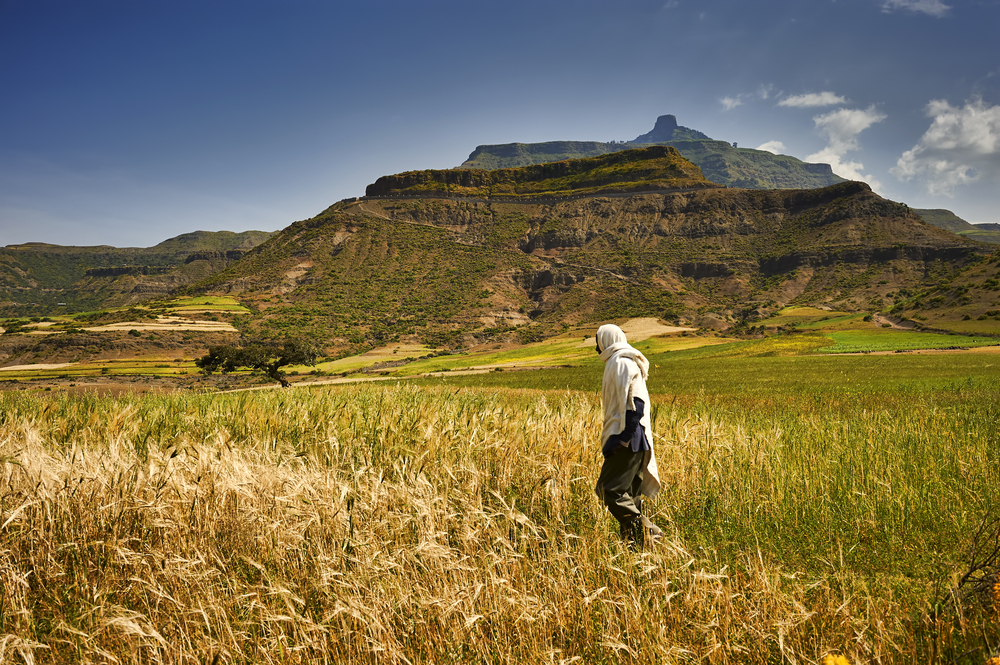income

Share
Five reasons to celebrate forests
Trees may not seem like anything exceptional, but they perform a myriad of services that we rarely recognize.![]() From making cities cleaner and cooler, to providing economic lifelines to millions of people, trees and forests are central to our environment as we know it.
From making cities cleaner and cooler, to providing economic lifelines to millions of people, trees and forests are central to our environment as we know it.
Unfortunately, global forest loss is at an all-time high, and unless we act soon, we risk unprecedented (and possibly irreversible) ecological changes.
It’s time to stop taking forests for granted. On this International Day of Forests, take a minute to enjoy the trees in your environment and to appreciate just how important forests are around the world. Here are five reasons to celebrate forests:![]()
1. Higher incomes, more resilient communities
Across the world, trees and forests provide benefits to around 1.3 billion people, including as a source of food, timber, fodder, fuel, and habitat for biodiversity. A PROFOR study in five African countries found that trees on farms make up as much as 17 percent of rural households’ gross annual income. And in Lao PDR, research shows that villages with greater access to forests are less sensitive to climate change because they can to turn to forests for resources during hard times. Ongoing PROFOR work is exploring the ways in which forests might also provide pathways out of poverty.
2. More jobs
Global demand for wood is growing rapidly. By investing in the forest sector, countries can create good jobs, support local artisanship, and formalize timber markets so that wood is sustainably harvested, and natural forests are protected. In Colombia, a PROFOR-supported study estimated that the forestry sector could reach a production value of over $4 billion and create 35,000 permanent jobs in forest plantations and industries. Another study in the Congo Basin found that urban timber markets already generate USD $15 million annually and employ at least 5,000 people.
3. More productive and cost-effective agriculture
Far from crowding out crops, trees can often improve agricultural yields by improving soil quality and regular water availability. PROFOR research in Malawi found that, instead of subsidizing fertilizer, the government could save about $71 million every year by encouraging farmers to grow trees in their maize fields. And agroforestry is not just an option for small farms; private enterprises like Fazenda da Toca in São Paulo are proving that large-scale agroforestry is viable and cost-effective.
4. Lower risk of natural disasters
Forests are a critical regulating force for our environment. A PROFOR study in the Philippines showed that higher forest cover ensures a more reliable water supply during the driest months of the years, while reducing the volume of floodwater during the wettest months. Forests also stabilize hillsides by decreasing the risk of soil erosion, helping to reduce the impacts of landslides and other natural disasters. Compared to man-made structures like dams and, maintaining forests is a much more cost-effective way to provide these benefits.
5. A more stable climate
Not only do trees help to cool our immediate surroundings, but by storing carbon they reduce the impacts of climate change. Unless, of course, we fail to protect them. An ongoing PROFOR activity finds that the southern Amazon Forest is under such stress from droughts and fires that it might soon become a net emitter of carbon dioxide (CO2). The good news is that it’s not too late to start restoring a billion hectares of degraded forests worldwide. A recent report, funded by the Climate Investment Funds (CIF) and PROFOR, estimates that investing in forest restoration and increased use of wood products in six countries could result in more than 150 million tons of CO2 equivalent being sequestered.
For stories and updates on related activities, follow us on twitter and facebook , or subscribe to our mailing list for regular updates.
Last Updated : 06-16-2024

Impact Evaluation of Landscape Programs in Ethiopia
PROGRAM SUMMARY
The overarching goal of this project is to assess the impact of landscape programs on livelihood and resilience outcomes in Ethiopia and inform the future design of the programs. Overall, the study seeks to understand the effects of the landscape programs on the outcomes such as household livelihoods, diversification of income generating activities, agricultural productivity and resilience to extreme events.
CHALLENGE
The World Bank has been investing for landscape programs in Ethiopia. Despite of the large investments in this area of work, there is little evidence to understand the impact of the landscape projects financed by the World Bank on household livelihoods and resilience. Further understanding and evaluation of impacts of the landscape programs is important for the design of the future investments in Ethiopia and other countries.
APPROACH
- Research Topic 1: Estimating impacts of the land restoration program on livelihoods and resilience in Ethiopia
- Research Topic 2: Impacts of land restoration program on agricultural productivity and production diversity during and after the 2015/16 severe droughts in Ethiopia
- Research Topic 3: Use of satellite remote sensing SIF observations to estimate the effects of land restoration programs on land productivity and resilience
- Main report for policy-makers and general audience
- Supporting technical report
- Collected and cleaned key datasets required to assess the impact of the Ethiopia landscape program from both economic and physical aspects
- Developed robust econometric and scientific approaches to measure the program impact
- Established the key collaboration with the International Food Policy Research Institute (IFPRI) to carry out the study. This collaboration is extremely useful as we conduct the impact evaluation of landscape programs in other countries, utilizing the experience and methodology established through this activity.
For stories and updates on related activities, follow us on twitter and facebook , or subscribe to our mailing list for regular updates.
Last Updated : 06-15-2024








